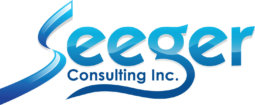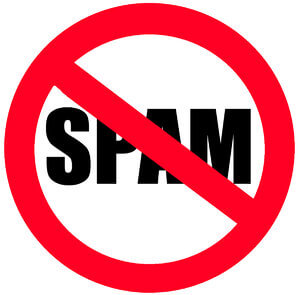Why should you care about the rules in Canada anyway? This legislation is the most inclusive and the most aggressive anti-spam law created yet. The new penalties are up to $10 million per violation, so if your client database list has:
– any names with email addresses that live in Canada?
– an email address that belongs to a Canadian, even if they are living somewhere else.
– a chance that someone will open an email while in Canada?
If you can't control where your contacts live or where they open email – then this new legislation affects you!

So what’s the big deal and isn't getting them to opt-in and give consent a best practice anyway? A double opt-in is a when a customer must opt-in twice to subscribe to electronic communications. This is an email marketing best practice, but do you commit to it fully? For example have you ever;
– collected event leads; and added them to your email list even if you didn't tell them what you would be sending them?
– or sent a lead a quick follow-up and then included them in your regular email newsletters?
– or emailed leads to confirm their address and then continued sending out emails even if they didn't respond.
– used a web form that has a pre-checked box to opt- in to you “xyz”; or
– added every person that purchased something to your newsletter email list.
Before those items would have been “implied consent”.
But under the new law only the sale of a product would be “implied consent”.
That implied consent also expires within 2 years under the new rules. So rather than trying to track every sales date, it is simpler to just get EXPLICIT consent before adding them to your list. And that means getting a confirmed double opt-in for each step of your prospecting, selling, and follow-up from now on.
For contacts that have already completed a double opt-in, they will not need to complete this step again. The new law says that once they have confirmed the acceptance, then that stays in place until they unsubscribe. But if you want to add them to a new process, or campaign then you would have to get a confirmation (or double opt-in) for that items also.
Important steps to take before July 1, 2014 are:
1) Send your contacts a double opt-in confirmation email. Explain that the new law requires them, to click on the link and confirm that they still want to receive your “xyz”. Be specific about how often you will contact them and list all contact points that you use. For example, if you send a monthly newsletter by email and have text messages available for webinars – then include those notes in your message.
2) Update all web forms. Web forms must also meet explicit consent, meaning that the person must select their choices. Most web forms are set to have some of the boxes ‘pre-checked”, and that removes the explicit consent required. The web form will also need double opt-in confirmation email to stop any spam or robot form completions.
3) Update any form or contest in your social media programs, links, or profiles with an opt-in page. Like item 2 above, you need a double opt-in email that explains the new rules.
4) Write an article for your newsletters that helps your contacts understand the value of the double opt-in. It will help if they understand how this change will help reduce spam. Plus teaching your contacts to click on links will help you get a more engaged contact list.
5) Update your policies or instructions for team members so that all new web forms and email campaigns meet the new rules.
6) Pick a date for your annual contact list clean up. Cleaning your list isn't required by the law but will help keep your contact list clean and involved for your next product launch.
What is the bottom line? This rule change could cost you a few inactive and lower value contacts from your list – but why would you want to keep those anyway?
How can they enforce it? I don’t know. I know they are giving you time to comply, but with the benefits of less spam and improved email engagement – why would you want to delay this?
The Canadian Anti-Spam Legislation (CASL) is a well thought out and complete Anti-Spam law. Canada is one of the last countries to put in anti-spam laws so the rules came from a lot of research. It is a good policy – good for all ethical business owners; and bad for a spam businesses. And anything that helps reduce spam will be good for online marketers.
This post is not a complete review of this legislation and is not to be considered as legal advice. Please research CASL fully and get a lawyer if you feel you may be affected by this new legislation.
————————————————————————————————————————————
Under the new law only the sale of a product would be “implied consent”. http://bit.ly/1l5GaOT @SeegerN (Tweet This)
————————————————————————————————————————————-
Do you think this new law will make a difference in Spam or just frustrate business owners? Comment below to share your thoughts, concerns or questions.
For more information:
Canada’s CASL Frequently Asked Questions http://fightspam.gc.ca/eic/site/030.nsf/eng/h_00098.html
Canada’s Fast Facts for CASL: http://fightspam.gc.ca/eic/site/030.nsf/eng/h_00039.html
Other helpful articles:
http://marketingland.com/everything-need-know-canadian-anti-spam-legislation-83841
http://www.techvibes.com/blog/a-guide-to-canadas-anti-spam-law-2014-05-20
http://blog.infusionsoft.com/product-tips/ready-canadas-anti-spam-legislation/

